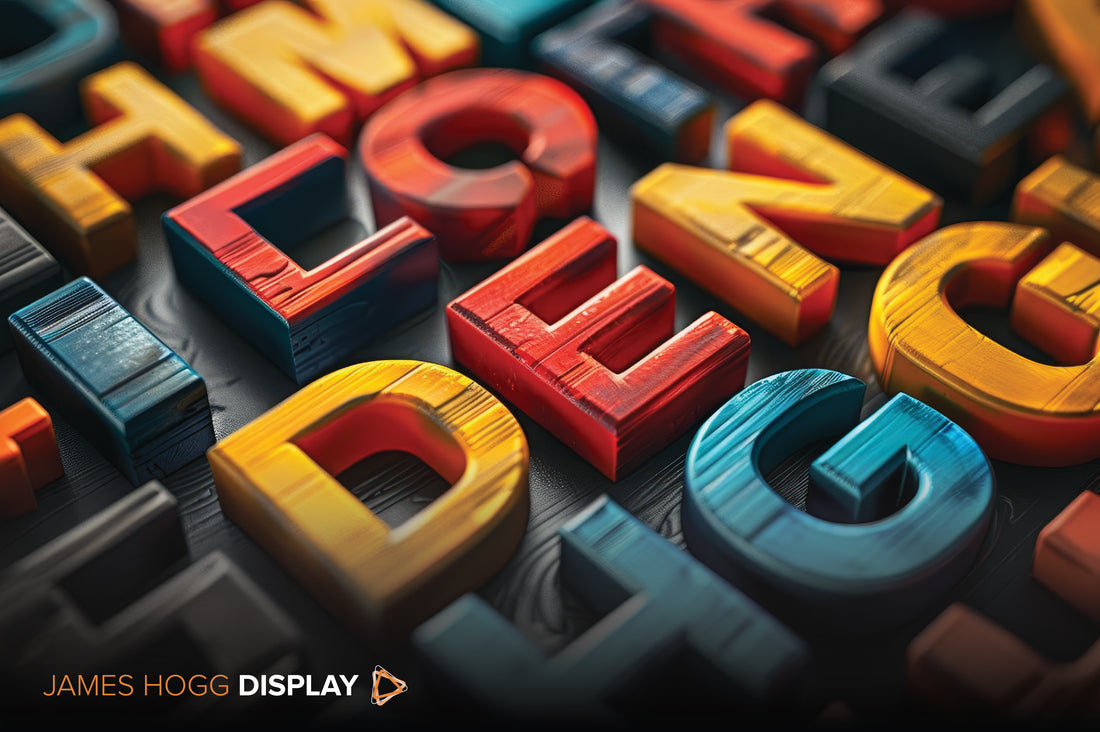Digital menu boards are becoming more and more familiar in modern fast food takeaways and quick service restaurants for enhancing readability, aesthetic appeal, and customer experience. This article covers the significance of font choice, key factors in selecting fonts, best practices for readability and brand consistency, effective font examples, common pitfalls to avoid, and practical tips for choosing the best fonts for digital menu boards.
Importance of Font Choice
Choosing the right fonts for digital menu boards is crucial as it directly impacts the customer experience. Fonts that are easy to read and visually appealing can enhance the overall look of the menu by allowing customers to quickly and easily find the information they need. Poor font choices, on the other hand, can lead to confusion, frustration, and a negative perception of the brand. The right fonts can also reinforce brand identity and help create a cohesive visual interaction.
Factors Influencing Font Selection
Several factors should be considered when selecting fonts for digital menu boards:
- Legibility and Readability: Fonts must be legible from a distance and under various lighting conditions. Readability is influenced by factors such as font size, spacing, and weight.
- Brand Consistency and Aesthetics: The chosen fonts should align with the brand's overall look and feel. Consistent use of fonts across all digital and print materials strengthens brand identity.
- Display Resolution and Viewing Distance: High-resolution displays allow for more detailed fonts, while low-resolution screens may require simpler, bolder fonts. Viewing distance also plays a role; fonts should be easily readable from the typical distance customers will be viewing the menu.
Best Practices for Font Selection
To ensure the fonts chosen for digital menu boards are effective, consider the following:
- Prioritise Readability: Choose fonts that are clear and easy to read. Factors such as adequate font size, proper spacing, and high contrast between text and background enhance readability.
- Serif vs. Sans Serif Fonts: Sans serif fonts are generally preferred for digital displays due to their clean lines and simplicity, which tend to be easier to read on screens. However, serif fonts can be used effectively if they align with the brand's style and are readable.
- Creating Visual Hierarchy: Use different font sizes and weights to create a visual hierarchy, guiding customers' eyes to the most important information first. Headings should be bold and larger, while descriptions can be smaller and lighter.
Examples of Effective Fonts
- Helvetica: Known for its simplicity and clarity, Helvetica is a popular choice for digital displays. Its clean lines and uniformity make it easy to read from a distance.
- Arial: Similar to Helvetica, Arial is a widely used sans serif font that is easy to read on screens. Its straightforward design ensures legibility across various resolutions.
- Roboto: This modern, geometric sans serif font is designed for optimal readability on digital displays. Its balanced characters and open curves enhance visibility.
- Open Sans: With its clean and friendly appearance, Open Sans is a versatile font that works well for digital menus. Its readability at different sizes and weights makes it suitable for various types of content.
- Lato: Known for its warm and inviting look, Lato combines functionality with aesthetic appeal, making it a solid choice for both headings and body text on digital menus.
Common Mistakes to Avoid
When selecting fonts for digital menu boards, avoid the following common mistakes:
- Overly Decorative Fonts: These can be hard to read and may distract from the menu content. Decorative fonts might look appealing but can reduce readability, especially from a distance.
- Poor Colour Contrast: Ensure there is a high contrast between the text and background to enhance readability. Fonts with low contrast can strain the eyes and make the text difficult to read, particularly in varying lighting conditions.
- Inconsistent Font Usage: Stick to a limited number of fonts to maintain a clean and professional look. Using too many different fonts can create a cluttered appearance and confuse customers.
- Inadequate Font Size: Fonts that are too small or too large can impact readability. Ensure font sizes are appropriate for the viewing distance and screen size of the digital menu board.
For further support with no obligation to find out how to choose fonts for your digital menu board give us a call on 0330 333 6106 or email info@jameshoggdisplay.com

